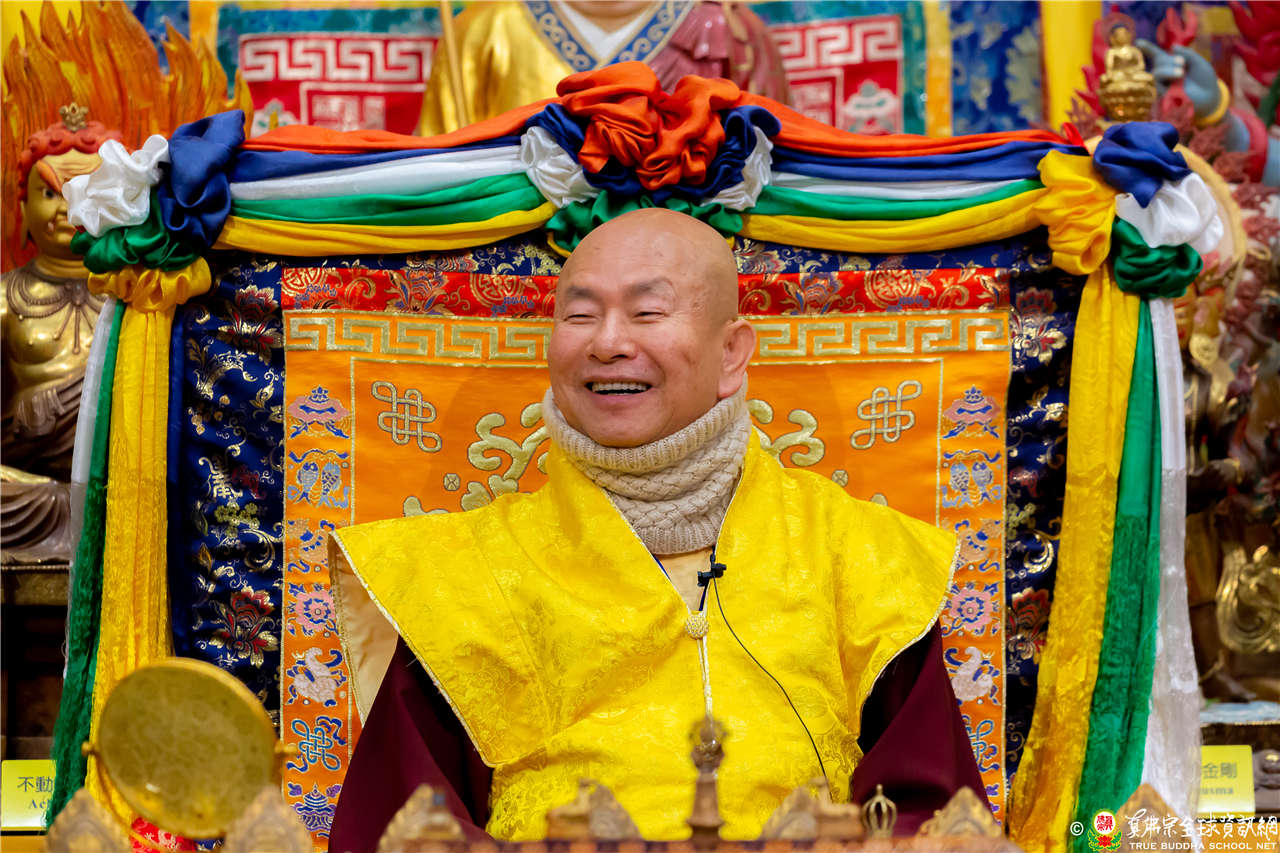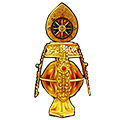
A Detailed Exposition of the Vimalakirti Sutra
by Grandmaster Lu, Living Buddha Lian Sheng of the True Buddha School
Translated into English by the True Buddha School Vimalakirti Translation Team
Discourse 40, 8 October 2022 - Chapter One—Buddhaverse (Continued)
Chapter One—Buddhaverse
Dharma Phenomena Bodhisattva,
Light Phenomena Bodhisattva,
Light Adorned Bodhisattva
Let’s now talk about the Vimalakirti Sutra:
Dharma Phenomena Bodhisattva.
We all know what bodhisattva means. How about dharma phenomena? I looked at other people’s explanations on what dharma is. Dharma refers to everything—the myriad things are called dharma. In Buddhism, we often mention 84,000 dharmas or 84,000 dharma doors, meaning that there are a great many of them. How about phenomena? Phenomena refers to the nature of dharma or nature of everything. Phenomena equate to nature and nature is equivalent to phenomena.
Dharma Phenomena [which is Dharmalaksana in Sanskrit] relates to one of the eight major schools of Mahayana Buddhism, the Dharmalaksana School. It is also known as the Eastern Yogacara School. Who brought back the Dharmalaksana School of Thought to China? It was Xuan Zang, who went to study at Nalanda University in India. He brought back many sutras to Tang China and translated them at the Big Wild Goose Pagoda located inside the Da Ci’en Temple.
He established a sect called Dharmalaksana or the Consciousness-only School, which follows the Yogacara tradition. This school focuses on the consciousness of the eyes, ears, nose, tongue, body, mind, mental consciousness, the eighth storehouse consciousness alaya,[1] and the ninth immaculate consciousness amala.[2] The ninth consciousness—the deepest of all dharma—exists [only] in Tantric Buddhism.
Yogacara and Madyamaka, the two major traditions in Buddhism nowadays, cover the deepest and broadest part of dharma. Tantric Buddhism tends toward Madyamaka.
Xuan Zang was said to return to China with flying colors. There was a tradition in ancient India in which gurus debated each other. Upon completion of his studies at Nalanda University, he was ready for debates and set up a platform, but nobody came to debate with him. I did some research on this and it turned out not a single person debated with him. That’s why he won. [laughing] Upon his return to Tang China, he translated many sutras, including the Lankavantara Sutra—the most important sutra in Yogacara—and The Noble Sutra of the Explanation of the Profound Secrets. Many sutras are related to Yogacara.
We can say that the Dharma Phenomena Bodhisattva has in depth understanding of dharma phenomena, and he uses dharma phenomena to teach and deliver sentient beings. This is my explanation, regardless of how other people explain it.
On the other hand, the Tiantai School focuses on emptiness, falsehood, and the middle way. Emptiness relates to the wisdom of true emptiness. All dharma that emerges is summed up as falsehood. Combining both dharma and emptiness forms the middle way. Emptiness, falsehood, and the middle way comprise The Threefold Contemplation in a Single Mind of the Tiantai School.
The Dharmalaksana School, also known as the Eastern Yogacara School, exclusively researches consciousnesses. Yogacara studies the eyes that see both real and unreal things; the ears that hear either good or bad things; the nose that smells fragrance or stench; the tongue that tastes different flavors…
Oh, I saw this on the television this morning: Do you know which part of our brain or which sense detects spiciness from eating hot chili peppers? It is not the tongue. According to the latest scientific study, it is the pain sensory system! Who would have known! The human brain is very complex. That’s what they said earlier today, although I can’t confirm its accuracy.
Dharma Phenomena Bodhisattva comprehends all the dharma and uses this dharma to teach sentient beings.
The next one is:
Light Phenomena Bodhisattva.
The key point of this bodhisattva is on the word, “light.” We all know light. What is light? Light represents wisdom and clear light radiance. In Tibetan Tantrayana, there is a ritual involving the offerings of lamps. Lamps are lit and the lamas recite the sutras. The lamps represent light—wisdom and clear light radiance.
The key meaning of this name is to reflect—reflecting upon one’s own actions, behavior, and conduct. A bodhisattva who constantly reflects upon themselves is named Light Phenomena Bodhisattva.
Some people are never reflective; they never introspect themselves and do not pay attention to their actions. The light—wisdom and clear light—helps to illuminate ourselves and show what we have done wrong. Wherever there is light, darkness disappears. “Light” implies illumination and introspection. The one who is reflective upon themselves and uses this method to teach and deliver all sentient beings is called the Light Phenomena Bodhisattva.
Confucius says, “Do not do unto others what you do not wish others do unto you.” Are you willing to be robbed or have your things stolen? Of course not. Then why do you steal or rob?! Do you want to be killed? Definitely not. Then why do you kill? That’s the idea. Remember this, “Do not do unto others what you do not wish others do unto you.”
When you reflect upon this, you are the Light Phenomena Bodhisattva. You constantly reflect on all your behavior and conduct and utilize your reflective actions to give and teach sentient beings.
As for the
Light Adorned Bodhisattva,
he is the one who dedicates the merit of his acts of giving, abidance by the precepts, endurance, etc. and his bright and wise conduct, and offers this merit with purity to all buddhas, bodhisattvas, and purelands in the ten directions. This bodhisattva adorns all the purelands. When one dedicates all their wise actions illuminated in the clear light radiance to all the purelands and buddhaverses, one is called the Light Adorned Bodhisattva.
In sum, the Dharma Phenomena Bodhisattva obtains the most profound dharma and utilizes this dharma in his acts of giving. The Light Phenomena Bodhisattva reflects upon themselves and uses this reflection method and reflective actions to teach sentient beings. And the Light Adorned Bodhisattva uses his wisdom and clear light radiance to adorn all the purelands.
Today, I have covered these three bodhisattvas.
[1] alaya-vijnana
[2] amala-vijnana
Next discourse on the Vimalakirti Sutra: Discourse 41, 9 October 2022 - Chapter One—Buddhaverse (Continued)
Previous discourse on the Vimalakirti Sutra: Discourse 39, 2 October 2022 - Chapter One—Buddhaverse (Continued)
Index of links to all discourse on the Vimalakirti Sutra: https://en.tbsn.org/guidem/detail/2975/
Back to the main index page of all dharma discourse: https://en.tbsn.org/guidem/index
Full webcast of 2022.10.8 Mahacundi Buddha Mother Group Practice (Ling Shen Ching Tze Temple, Redmond, USA) and dharma discourse with English interpretation: https://youtu.be/LrPKe2a0ZXw




